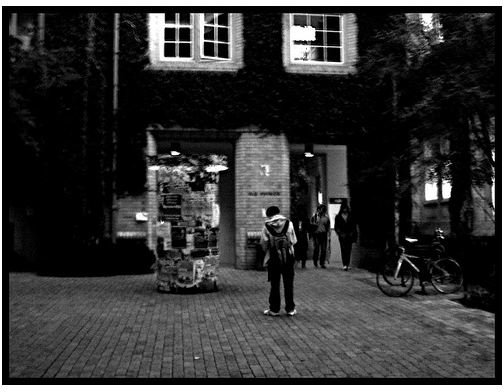The Rule of Six: Elements to Keep in Mind When Film Editing
The Rule of Six
When editing a video project you have to keep in mind both the spatial and contextual continuity for a given scene. You have to keep in mind that the action is a small part of the entire film and that the various angles it was captured in need to be put together in a way so the audience will be able to understand what is occurring. These elements can be designated by the Rule of Six, which are the six points that need to be considered when cutting together a scene. The order of importance of these is different depending on whom you ask, but the following is a good hierarchy to consider.
1. Emotional Continuity
The most important goal of editing a scene is the emotion that it should hold. Keep the tone of the film in mind, as well as the specific aspect of the overall sense that the scene should carry. When selecting shots, length of cuts, and transitions, think about how the rest of the scenes were edited, then how this scene fits into the whole. Try to never violate the feelings in the moment for story or spatial continuity. It is better to keep the overall tone of the film continuous because that is what the audience will pick up on most.
Image: https://www.flickr.com/photos/tinken/85945748/
2. Story/Plot
The story is also very important, so make sure that this scene fits in perfectly with the whole film. Place it in correct order, and make sure that the scene clearly portrays what has happened. If a given scene is not clear then the continuity of the plot will be lost and the audience will disconnect.
3. Rhythm
Think about the rhythm of the film, and the other scenes, and make sure that the edits you do on a sequence maintain this. You do not want to suddenly have a scene that breaks the film up and loses the audience’s focus. If a scene does not seem right for its location then it should be cut entirely.
4. Eye-Trace

Eye-trace is the first of the last three items of the Rule of Six, which if they were all put together would not be as important as one of the first three. This means that you should keep in mind what the audience will be looking at in each frame, and to make sure that you have everything exactly where you want the audience to see it. For example, if you have main action happening and you would like the audience to focus on it then put it in a central spot in the frame, and do not let background objects or action take over the image.
Image: https://www.flickr.com/photos/coyotejack/122521795/
5. Two-Dimensional Space
You have to make sure that your edits maximize the two-dimensional aspects of the frame. The screen is a two-dimensional image, but you are trying to portray a three-dimensional world. Make sure you cut together correct images so that it will continue to give the illusion that they are watching a three-dimensional event. This means respecting things like the Z-Axis and staggered depths of field.
6. Spacial Continuity
The last one is to make sure to maintain the spatiality of the three-dimensional space in the frame. This means that there should not be jump cuts and that all movement in the frame accurately represents the space that you are trying to portray to the audience. This means that you need to show all movement through a series of shots, and do not let someone jump from one side of a room to another without showing them move to that second location.
All Important
Though they are listed in a descending order of importance, they should all be considered important. A great editing job will make sure that all of these elements are at play, and that the scene works as a whole, keeping in mind both the audience, and the integrety of the piece.
This post is part of the series: Video Editing
Different articles that address video editing.
- Avoiding Editing Catastrophes Pt. 1 of 2
- Creating the Perfect Editing Space
- Things to Avoid in Your Editing Computer
- The Importance of Digital Video Editing
- How To Use “Continuity Editing” To Tell Your Story
- What Is “Complexity Editing?”
- The Basics of Non-Linear Video Editing
- Components of a Non-Linear Video Editing Program
- Maintaining Your Computer for Digital Video Editing
- Knowing What to “Cut-Out” When Editing
- Editing Techniques: The Rule of Six
- Things to Do Before Installing New Video Editing Software
- Things to Avoid When Digital Video Editing
- The Editing Order in Video Production
- Using Visual Vectors When Editing
- Video Transitions for Editing Digital Video
